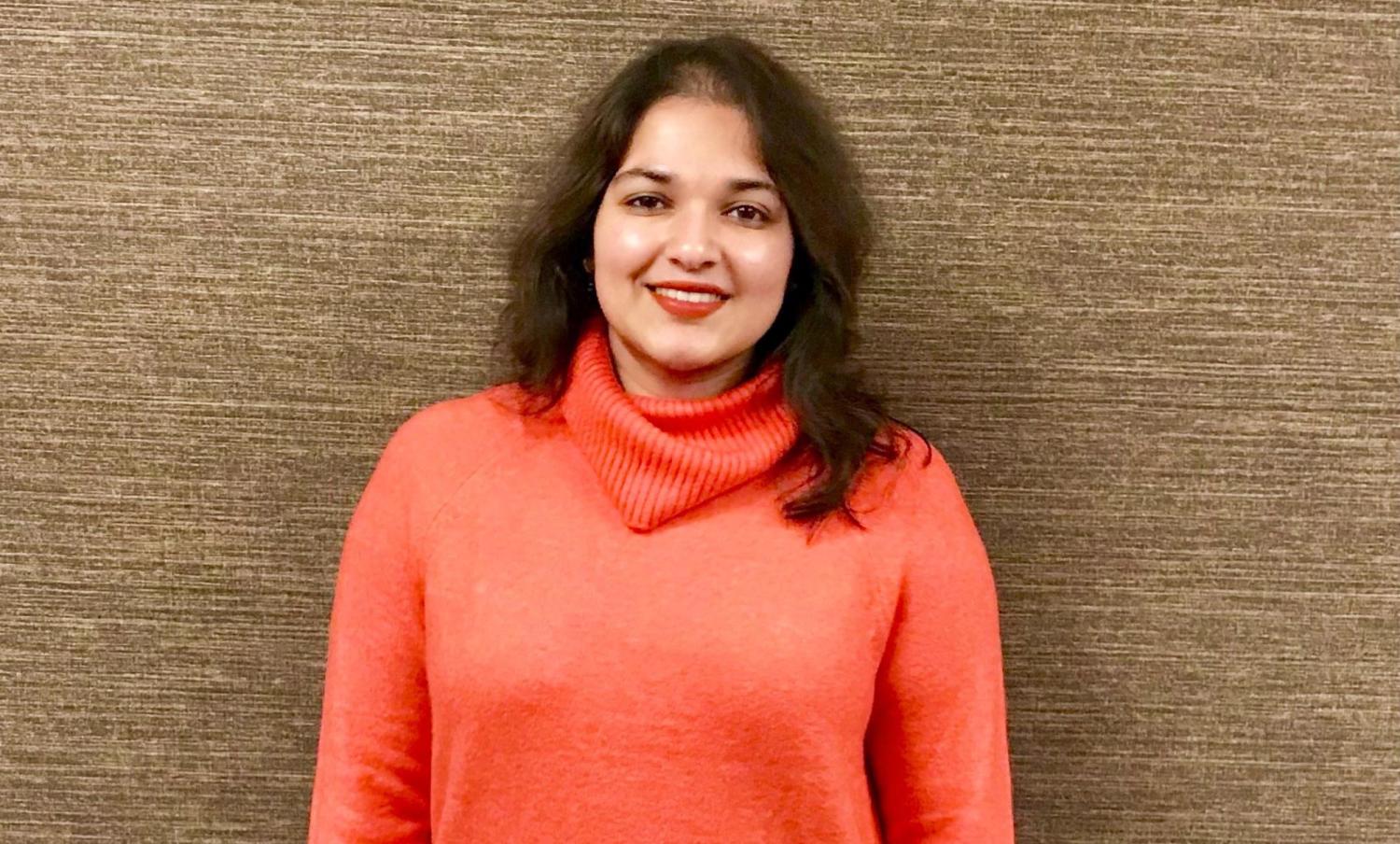Embedded systems grad finds success as augmented and virtual reality engineer

As an infrastructure engineer at Meta, the technology company formerly known as Facebook, Abhishikta Pandit’s team is building augmented and virtual reality (ARVR) platforms that could open new experiences and opportunities for individuals with disabilities.
Pandit, who earned her professional master’s in electrical engineering with a focus on embedded systems engineering (ESE) at CU Boulder in 2015, said collaboration and her colleagues’ rich knowledge of electrical infrastructure engineering drive her in a field “that is never a dull place.”
It’s a career that satisfies her engineer’s dedication to building things and solving problems but also one she finds immensely satisfying. She knows she is helping to stretch limits we may feel in both a pandemic world when travel shuts down or when disabilities slow our outside engagements.
“Using such technologies, I can be in California and have the experience of skiing in Colorado,” Pandit said. “Bells and whistles aside, I was drawn to this work partly because kids who have learning disabilities or conditions such as autism can use such platforms to bring their classrooms home and make learning more approachable. There are so many positive impacts.”
A Future-Building Industry
As someone who frequently ruined her brother’s remote-control cars by taking them apart to examine their structure and engines, Pandit knew early that she would become an engineer.
In the years before college, she began learning about advanced circuits, such as clap switches, solar lights and drip irrigation systems that used light sensors. She said those explorations moved her toward studying electrical engineering as an undergraduate, which laid the foundation for her to understand embedded systems—the computer structures that have a dedicated function within a larger mechanical or electronic network.
At Intel, her first full-time role after CU Boulder, she worked for six years in several positions, including as an engineer for autonomous driving and programmable solutions. Setting up automated processes was a significant part of her work, she said, and a fundamental skill she learned in the embedded systems program.
Thrilled to work at a pioneer in using semiconductors—the silicon-based material used to power healthcare devices, ATMs, computers, cellphones and other electronics—Pandit said Intel provided her with “an opportunity to learn more about how real-world complex systems are built from conception to production.”
She had dreamed of working at the company since receiving her first childhood computer, which bore the Intel Pentium processor symbol.
“I made up my mind to one day be a part of the innovation driving every advancement in technology,” said Pandit, adding that her CU graduate degree helped her land that first role.
Why CU Boulder?
After completing an undergraduate degree in electronics and telecommunications engineering at India’s Sir M. Visvesvaraya Institute of Technology, Pandit said she wanted formal advanced training in embedded systems and applied to graduate programs in the United States.
The first in her family to leave India for a master’s degree, she was making program decisions from abroad and felt uncertain about which choices to eliminate.
Pandit liked CU Boulder’s state-of-the-art program and industry-relevant professors. But when she received an acceptance letter in her native Kannada language from graduate program advisor Adam Sadoff, the choice was made.
“It makes me so happy that my CU department recognizes, appreciates and celebrates small details like the fact that I was born and raised in Bangalore,” Pandit said. “Going to Boulder was, by far, the best decision for me to make.”
With “life changing” mentorship by professors such as Andrew Femrite and Peter Mathys, Pandit says CU and its faculty continue to inspire her.
Pandit said she found it hard to move after graduate school to the San Francisco Bay Area for her role at Intel.
“I felt at home and became a well-rounded engineer in the beautiful city of Boulder,” she said. “It’s a homecoming for me every time I visit.”
Why the ESE Program?
The embedded systems coursework in Pandit’s 2015 CU program still “seamlessly integrates” with real-world solutions at Intel, Meta and other cutting-edge industry environments, Pandit said.
“It’s amazing that I use fundamental learnings from my grad program—such as identifying bottlenecks in engineer workloads, or other steps that allow efficient processing in a complex environment—on a daily basis in my work,” she said.
Current CU ESE coursework is equally relevant, she said, including heavy involvement in the system on chip (SOC) platform, a circuit that integrates all or most parts of a computer or other electronic system.
Pandit said such classes give students exposure and hands-on experience to “the building block for future enterprises where scalability and reliability are important” and helps in building innovative landscapes.
Her experience building embedded systems at CU made it “a no-brainer” for her to get internships and full-time roles, Pandit said. The program and her internships also gave her a strong idea of what hiring managers in the industry needed, and how to translate insights from her courses.
“CU and its ESE program are definitely recognized in workplaces,” she said. “I can confidently say that now that I’m on the industry side.”
The Future in Embedded Systems
As groundbreaking shifts take place in many areas of engineering—in biotechnology, quantum computing and virtual reality—Pandit is excited for the future.
“We live in an exciting time, with many opportunities to change the future technological landscape and be part of its innovation,” she said. “This engineering work gives us an opportunity to live in the future.”
In coming years, she hopes to grow into more of a subject matter expert in ARVR platforms and keep developing this area of technology that can “give extra attention to special needs” and help connect people “at a time when the basic human element is becoming more diluted.”
“What I work on now can help future generations,” Pandit said. “That’s so fulfilling.”

